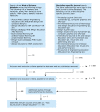How future proof is design education? A systematic review
- PMID: 36160827
- PMCID: PMC9483341
- DOI: 10.1007/s10798-022-09743-4
How future proof is design education? A systematic review
Abstract
Due to a rapidly transforming world, design education needs to adjust itself. To do so, it is essential to understand curriculum gaps in the discipline. This systematic review (n = 95) reports on these gaps and the future readiness of design curricula. The search strategy consisted of both a database search, and discipline-specific journal search in which generalised results about current or future perspectives of design education were found. Structured around the constructive alignment framework, this research found that more 21st century learning objectives focusing on skills next to domain-specific knowledge need to be incorporated, and teaching and learning activities need to be more student-centred and better aligned to industry. Related to assessment, a considerable gap was found in literature on guidelines and means for formative assessment. Design education is not yet ready for the challenges ahead, therefore, the authors hope that design departments rethink their curricula and fill the specified gaps.
Keywords: Constructive alignment; Design Education; Design pedagogy; Future-Proof Education; Skills for industry 4.0; Systematic review.
© The Author(s), under exclusive licence to Springer Nature B.V. 2022.
Conflict of interest statement
Conflicts of interest/competing interests:Not applicable, there are no conflicts of interest.
Figures
References
-
- Adams RS, Forin T, Chua M, Radcliffe D. Characterizing the work of coaching during design reviews. Design Studies. 2016;45:30–67. doi: 10.1016/j.destud.2015.12.007. - DOI
-
- Alamäki A. A conceptual model for knowledge dimensions and processes in design and technology projects. International Journal of Technology and Design Education. 2018;28(3):667–683. doi: 10.1007/s10798-017-9410-7. - DOI
-
- Altay B. Multisensory Inclusive Design Education: A 3D Experience. The Design Journal. 2017;20(6):821–846. doi: 10.1080/14606925.2017.1371949. - DOI
-
- Augsten A, Gekeler M. From a master of crafts to a facilitator of innovation. How the increasing importance of creative collaboration requires new ways of teaching design. The Design Journal. 2017;20(sup1):S1058–S1071. doi: 10.1080/14606925.2017.1353049. - DOI
LinkOut - more resources
Full Text Sources
Miscellaneous






